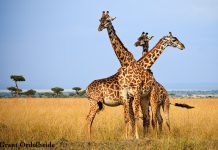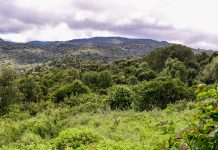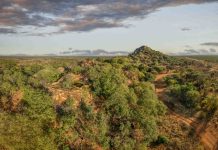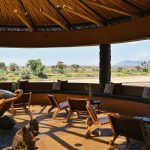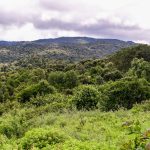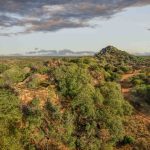Nairobi, Nov 21 (Swara) – Kenya Wildlife Service (KWS) and its partners have mounted an emergency wildlife rescue and translocation operation to save giraffes and zebras stranded by rising waters and land-use changes around Lake Naivasha.
Over several days, a specialist KWS veterinary and capture team moved 15 Masai giraffes and about 150 common zebras from Manera Farm in Naivasha to safer habitats in Nairobi National Park and Naivasha Wildlife Sanctuary.
Lake Naivasha, a freshwater lake in Kenya’s Rift Valley, has expanded dramatically in recent years. Its surface area had grown by more than 50 per cent, from about 139 km² before 2010 to nearly 200 km² by 2020, swallowing swathes of shoreline, farms, roads and homes.
The surge in water levels inundated sections of Manera Farm and surrounding rangelands, wiping out grazing areas and cutting off traditional wildlife movement routes. At the same time, expanding agriculture, fencing and other land-use changes fragmented habitats, leaving wild animals squeezed between swelling waters and human settlements.
As pasture and access to freshwater dwindled, giraffes and zebras on the farm began to face starvation, heightened disease risk, and an increased risk of conflict with nearby communities.
To avert a welfare crisis, KWS activated its elite capture and veterinary units, among the most experienced in Africa in handling large mammals. Each giraffe was safely darted with immobilisation drugs under the supervision of wildlife veterinarians, monitored closely, then loaded onto specially designed translocation trucks. Zebras were herded into secure holding pens and moved in groups to reduce stress.
The operation was logistically complex: giraffes can stand up to 5–6 metres tall and weigh over 800 kg, while adult zebras weigh around 250–320 kg. Ensuring they were not injured during darting, loading, transport and release required meticulous planning, precise dosing, and constant monitoring of breathing, temperature and heart rate.
The animals were moved to Nairobi National Park and Naivasha Wildlife Sanctuary, both areas with suitable habitat, secure water sources and established protection.
Kenya has pledged to keep more than 20 per cent of its land under some form of conservation, with parks, reserves and conservancies forming vital refuges as climate change and human activity squeeze natural ecosystems.
By relocating these giraffes and zebras rather than leaving them to perish in degraded or flooded habitat, KWS not only prevented suffering but also boosted the wildlife populations of recipient areas, strengthening ecological resilience and tourism potential.
The situation at Lake Naivasha formed part of a wider environmental story. Scientists and government agencies had documented unusual and sustained rises in water levels across several Rift Valley lakes, displacing communities, damaging infrastructure, and forcing wildlife into ever-smaller and more contested spaces.
Around Naivasha, booming floriculture, smallholder farming and rapid population growth increased demand for land and water. While these sectors supported thousands of jobs and a major export industry, they also intensified pressure on wetlands and wildlife corridors when not carefully managed.
In its statement on the relocation, KWS reiterated its broader mandate:
“KWS remains committed to safeguarding Kenya’s wildlife and securing healthy habitats for their survival. Operations like the Manera translocation were about more than moving animals; they were about adapting conservation to a changing climate and landscape, and ensuring that Kenya’s iconic species continued to roam in safety for generations to come.”
The Manera Farm operation underscored a new conservation reality: as lakes swelled, land-use intensified and weather patterns grew more erratic, wildlife agencies had to respond faster, plan more strategically and work even more closely with landowners and communities.
Source: KWS



